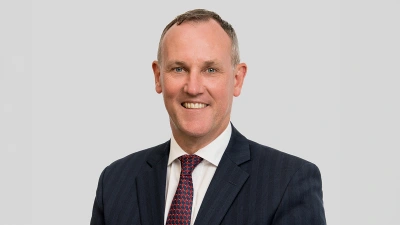Growing attraction: investors take a closer look at managed futures


Amid the gloom in local and global markets, one investment strategy has generated noteworthy returns in 2008. Managed futures, an investment strategy that gains market exposure primarily through futures contracts, is in solid positive territory for the year.
The Barclay CTA Index, which provides a benchmark of representative performance of commodity trading advisers (CTAs), has generated a return of 11 per cent for the year.
In order to qualify for inclusion in the index, a CTA must have four years of prior performance history.
Contrast that with the performance of stock markets: the S&P/ASX 300 Accumulation Index has lost over 35 per cent and the MSCI World Index has dropped more than 38 per cent over the same period, and it is clear that managed futures is an investment strategy worth looking at further.
An overview of managed futures
‘Managed futures’ refers to the active trading of derivative contracts (primarily futures) over underlying commodity and financial assets, such as agricultural commodities, energies, metals, currencies, equity indices and interest rates.
Both long and short positions can be taken, through buying or selling the derivative instruments respectively, and hence the strategy can profit from both rising and falling prices.
|
|
Generally, managed futures strategies are either systematic or discretionary.
A systematic strategy relies on the application of statistical analysis in order to take investment positions, whereas a discretionary strategy will rely on the judgment of the investment manager in order to take investment positions.
Many of the large managed futures programs apply a systematic strategy through an analysis of observable price trends in the underlying assets.
Today, there is over US$150 billion invested in managed futures, up from US$5 billion at the end of the 1980s.
The strategy has the potential for high returns, but also typically exhibits high volatility.
One factor explaining this volatility is that the underlying commodity and financial assets can be subject to sudden and severe price swings — the extreme movements in the price of crude oil and in the AUD/USD exchange rate provide recent examples of this. It is not uncommon for individual managed futures programs to record volatility in excess of 10 per cent.
How do managed futures add value to a portfolio?
Historically, managed futures returns have not been highly correlated with the returns of traditional assets such as stocks and bonds. Table 1 shows the correlation between managed futures and various traditional assets.
|
| |||
| Australian Stocks
(S&P/ASX 300) |
Australian bonds (UBS Composite Bond Index) | World stocks (MSCI World Index) | |
| Managed futures
(Barclay CTA Index) |
-0.03 | 0.19 | -0.07 |
There are several reasons that explain this lack of correlation. Managed futures programs can take long and short positions in over 150 global markets, which means their investment profile is different to stocks and bonds. Also, commodity prices react differently to macro factors such as inflation and supply disruptions than do stocks.
The lack of correlation between managed futures and traditional investments means that by adding managed futures to a traditional investment portfolio, investors may be able to improve the risk and return profile of their overall portfolio.
The two pie graphs in this article illustrate this concept.
The first graph illustrates the performance of a traditional investment portfolio over the past 10 years.
The effect of reducing this traditional portfolio to 90 per cent and including a 10 per cent allocation to a managed futures program over the same period is shown in the enhanced portfolio in the second graph.
The enhanced portfolio yields a higher average return and a lower average voslatility than a traditional portfolio.
A related benefit is that managed futures have historically demonstrated resilience during times of market stress.
Adding managed futures to an investment portfolio may therefore provide a measure of downside protection.
This point is illustrated in Table 2, which shows the performance of the Barclay CTA Index during the seven largest drawdowns in the Australian stock market since 1990.
In light of recent events, it is worth noting two other, ancillary benefits of managed futures.
Firstly, futures contracts are traded on well-regulated exchanges, meaning that managed futures programs are not typically subject to the same liquidity and counterparty risk pressures that can arise when trading other derivative instruments, such as credit default swaps.
Secondly, the various restrictions on short selling have not extended to futures contracts, meaning that in a climate of falling commodity and financial asset prices, managed futures programs have been able to maintain their short positions.
How to get exposure to managed futures
The simplest way of obtaining exposure to managed futures is by investing in a managed futures fund.
Several of the world’s largest and best-known managed futures managers offer funds that can be accessed by Australian investors.
Another approach is to invest in a structured product that is linked to a managed futures program. For example, a capital guaranteed product with a managed futures underlying investment would limit an investor’s downside but continue to provide exposure to the investment strategy.
This approach may appeal to investors concerned about the inherent volatility in many managed futures programs.
Indeed, managed futures have several characteristics that make them well suited for inclusion within structured products. In particular, they deploy cash in a highly efficient manner, leaving spare cash that can be utilised for
the provision of a capital guarantee.
Because the underlying futures contracts are highly liquid, managed futures programs tend to offer attractive liquidity terms to investors.
Mainstream appeal
Once a niche play, the rapid increase in assets allocated to managed futures programs suggests that a broader range of investors has now endorsed the investment strategy.
Australian investors are able to access managed futures through a number of well-established providers, either as a direct investment or through a structured product linked to the investment strategy.
(All figures in this article are as of October 31, 2008.)
Hersh Gandhi is head of product development at Man Investments Australia, part of the Man Group.
Recommended for you
In this week’s episode of Relative Return Unplugged, AMP chief economist Shane Oliver joins the show to unravel the web of tariffs that US President Donald Trump launched on trading partners and take a look at the way global economies are likely to be impacted.
In this episode of Relative Return, host Laura Dew is joined by Andrew Lockhart, managing partner at Metrics Credit Partners, to discuss the attraction of real estate debt and why it can be a compelling option for portfolio diversification.
In this week’s episode of Relative Return Unplugged, AMP’s chief economist, Shane Oliver, joins us to break down Labor’s budget, focusing on its re-election strategy and cost-of-living support, and cautioning about the long-term impact of structural deficits, increased government spending, and potential risks to productivity growth.
In this episode of Relative Return, host Laura Dew chats with Mark Barnes, head of investment research, and Catherine Yoshimoto, director of product management, from FTSE Russell about markets in Donald Trump's second presidency and how US small caps are faring compared to their large-caps counterpart.










